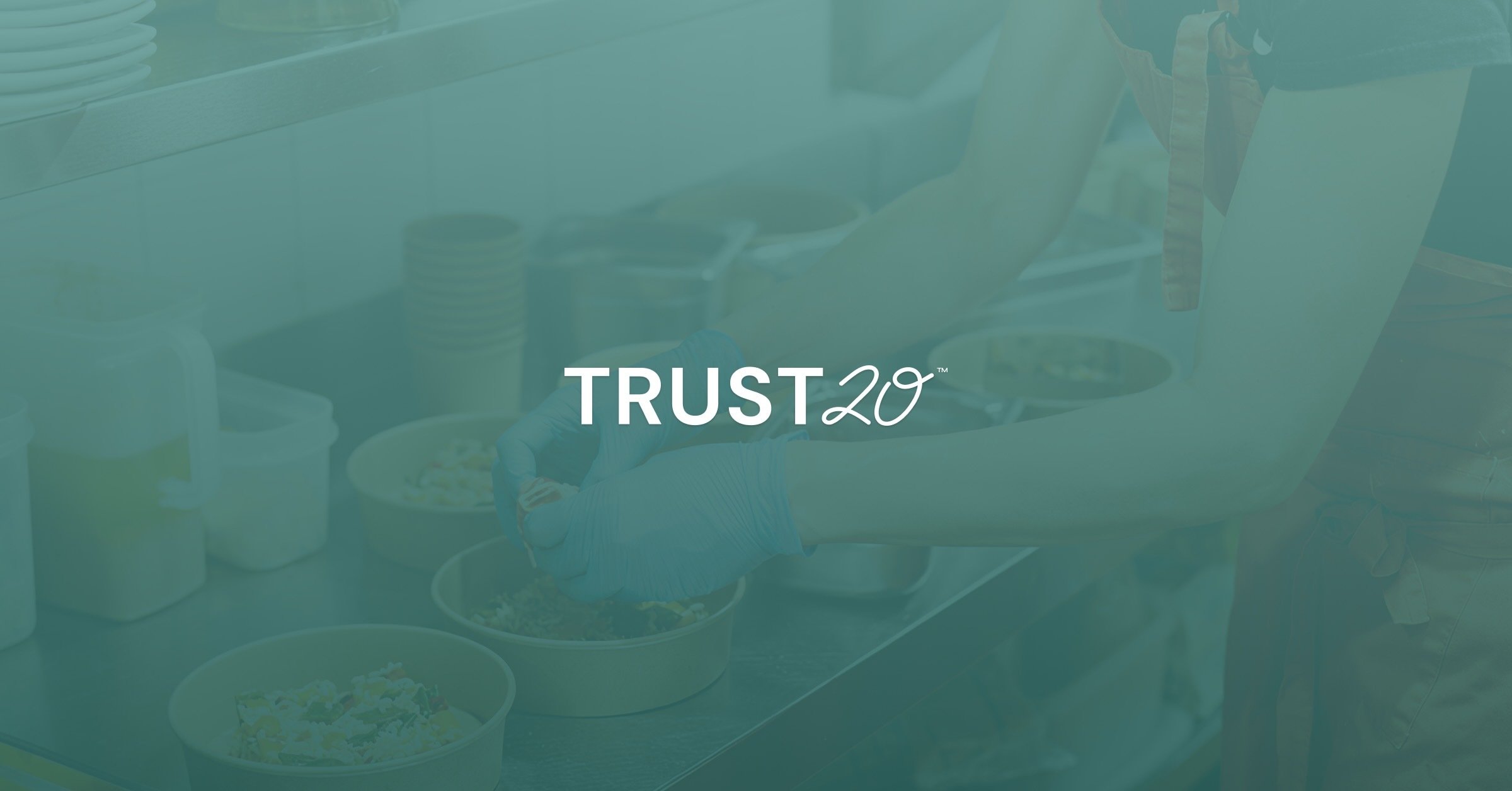Tracing foodborne illnesses and food safety incidents has become more challenging due to a globalized food supply chain. As a result, it is more critical than ever to ensure that you know and trust your food suppliers and sources.
In October 2023, applesauce pouches, a popular children’s snack, made national news because they contained contaminated cinnamon. This incident resulted in lead poisoning in over 500 children.1
Over the last 14 years, the regulations within the Food Safety Modernization Act (FSMA) have been evolving to prevent and mitigate these kinds of food safety incidents. The compliance date for one of the most recent rules that will foster more secure safeguards, FSMA 204, the Food Traceability Rule, is fast approaching–do you know what it means for your establishment?
FSMA 204 includes guidelines for anyone who manufactures, processes, packs, or holds foods on the Food Traceability List, and everyone must comply by 2028.
Read on to learn more about the Food Traceability Rule and how it applies to your establishment. We’ll go over:
What foods are on the FSMA 204 Traceability List?
Does the FSMA 204 rule apply to my establishment?
What records do I need to keep for compliance with FSMA 204?
How do I prepare for compliance with FMSA 204?
Did the compliance date for FSMA 204 change?
What should a traceability plan include?
What is traceability?
Traceability is the ability to track the pathway of an item through its history or location. In the context of food, traceability means being able to track and record a food, ingredient, or product through its life in the global supply chain.
Consider this example: a tree nut supplier delivers an order to a manufacturing plant. That manufacturer creates and packages a nut bar. You order a pallet of these nut bars to sell at the front counter of your bakery.
In this instance, traceability means it is possible to identify where these tree nuts originate, where they’ve traveled, and every establishment that sells products containing them.
FSMA 204 establishes requirements for capturing and storing traceability records using Critical Tracking Events (CTEs), Key Data Elements (KDEs), and Traceability Lot Codes (TLCs).
Let’s start by clearly defining these record elements.2
Traceability basics
Information is power, and the more records available, the faster an outbreak or incident can be sourced–and stopped. The record elements below are the three primary information pieces required by the Food and Drug Administration (FDA) in FSMA 204.
Critical Tracking Events (CTEs) are key steps in a food’s journey, including harvesting, cooling, initial packing, shipping, and receiving. Events like shipping and receiving apply across the supply chain (including in your establishment!).3
Key Data Elements (KDEs) are critical details such as product descriptions, shipment dates, and location descriptions. All foods and CTEs will have different KDEs, which must be accessible to suppliers and foodservice establishments. KDEs are generally stored in a barcode or QR code.
Traceability Lot Codes (TLCs) are unique descriptors—often an alphanumeric code, essentially—that identify a food item within all traceability records. These records should be accessible at all times.4
What foods are on FSMA 204’s Food Traceability List?
The Food Traceability List (FTL) is a key component of FSMA 204. It highlights the foods that historically have caused the most foodborne illness outbreaks and marks them as the foods for which the industry must take additional steps to maintain traceability records.
If you use any foods on the chart below in your establishment, keep reading to learn more about how FSMA 204 impacts your operations.
Even if you don’t use a product in its raw form, consider the ingredients in your dishes or ready-to-eat products. If a food item contains one of the foods on the FTL, it must comply with the Traceability Rule.
|
Soft cheeses Nut butters Fresh cucumbers Fresh herbs Fresh leafy greens |
Fresh melons Fresh peppers Fresh sprouts Fresh tomatoes Fresh tropical tree fruits Fresh-cut fruits |
Fresh cut vegetables Finned fish Smoked finned fish Crustaceans Ready-to-eat deli salads |
View the detailed Food Traceability List on the FDA’s website.
Does the FSMA 204 rule apply to my establishment?
There has already been a lot of buzz around FSMA 204, and many operators are determining whether the new rule applies to their business.
Here are some questions to ask yourself about your business to determine if you need to prepare for FSMA 204 compliance:
-
Do you sell any of the foods on the FTL? Are any foods on the FTL used as ingredients for your menu items or ready-to-eat foods?
-
Do you sell food items for public consumption or ship out foods prepared in your establishment?
-
Do you buy ingredients from a distributor, supplier, or grower?
If you answered yes to any of these questions, you must take steps to comply with the Food Traceability Rule.
However, there is one exception. If your annual food sales are below $250,000, your establishment is exempt from the recordkeeping requirements.6
What are the consequences of non-compliance?
The consequences for failure to comply with FSMA regulations depend on the nature of the violation. The FDA may first send advisory letters, but depending on the severity of the violation, they may proceed with court or administrative actions.
Some of these actions include detaining food products to isolate contaminated or misbranded products, mandatory recalls, and suspending a facility's food registration to prevent food shipments.7
What records do I need to keep for compliance with FSMA 204?
The Food Traceability Rule will help evolve digital recordkeeping and record sharing globally. It is hard to share paper records with an international supplier!
According to the FDA, restaurants and other foodservice establishments must track the following:
-
Traceability lot code for the food,
-
Quantity and unit of measure of the food,
-
Product description for the food,
-
Location description for the immediate previous source of the food,
-
Location description for where the food was received,
-
Date you received the food,
-
Location description for the traceability lot code source, or the traceability lot code source reference, and
-
Reference document type and reference document number.8
Businesses with over one million dollars in food sales must provide this information in an electronic, sortable spreadsheet. If you have less than a million dollars in food sales, you may choose another form of documentation (e.g., sales receipts).
However you choose to document this information, it is essential that you consider a tool with the ability to share information and data with another tool or system (also known as interoperability).
Interoperability is critical because no one system will work for every sector of the supply chain, but all stops along the way must share information under FSMA 204.3
How do I prepare for compliance with FMSA 204?
It’s a big overhaul, so get ahead of the game to ensure a smooth transition. Here’s a game plan.
-
Research and learn: It is important to know the details of the Food Traceability Rule (you’re off to a great start with reading this article!).
-
Review your menu: Look through your current and seasonal menus and offerings. Determine which foods used in your establishment are on the FTL.
-
Open the lines of communication: Start a conversation with any distributors, suppliers, or growers you work with so you can collaborate on your strategies. Consider reaching out to fellow operators so you have reinforcements available if you get stuck in the weeds.
-
Invest in the right technology: Review the recordkeeping software and tools available. Make a list to compare and choose the right system(s) for the recordkeeping you must implement.
-
Develop your traceability plan: Everyone adhering to FSMA 204 must document a traceability plan. Start crafting this plan now so you’re not under the wire!
Did the compliance date for FSMA 204 change?
On March 20, 2025, the FDA announced that the compliance date for FSMA 204 would be extended by 30 months.9 The compliance date for FSMA 204 was initially set for January 20, 2026. Along with the extension announcement, the FDA also noted that it intends to extend the compliance date with appropriate procedures later.
The compliance date extension doesn’t alter any of the requirements of the Food Traceability Rule, and the FDA doesn’t have plans to amend those requirements. The extension is meant to provide the food industry with additional time to meet FSMA 204’s requirements.9
What should a traceability plan include?
The FDA has outlined the key information required in a traceability plan. They include:
-
A description of the process you use to maintain your records, including their format and where you store them.
-
A description of the process you use to identify foods you manufacture, process, pack, or hold that are on the FTL.
-
A description of your process for assigning traceability lot codes to foods on the FTL.
-
A statement documenting the point of contact for questions regarding your traceability plan and records.
Businesses that grow or raise foods on the FTL must include additional information regarding details about their farms, including a map, field names/locations, and more.
Other important considerations include:
-
Can your system capture, store, and share KDEs?
-
How will your distributors, suppliers, or growers share KDEs with you?
-
Do your partners need data that you are not currently documenting?
-
Can you create an electronic, sortable spreadsheet of FSMA 204-required records?
-
What gaps have you uncovered, and how are you going to fill them?7
You should schedule regular audits and updates to your traceability plan to ensure it remains accurate and compliant. Everyone governed by the Food Traceability Rule must retain a record of previous traceability plans for two years after each time the plan is updated.
If you develop a traceability plan now, you will have time to test, evaluate, and adjust it long before the compliance date in 2028. This will also give you more time to adjust your budget to accommodate any new software, systems, or training required to meet the requirements of FSMA 204.
The takeaway
FSMA 204 will have a significant impact on the FDA’s ability to respond to contamination incidents and foodborne illness outbreaks. As the countdown to the compliance date ticks by, now is the time to determine how it will impact your establishment and the preparation steps you need to take.
According to Frank Yiannas, the Deputy Commissioner for Food Policy and Response at the FDA, “Better food traceability is the equivalent of better transparency.”4 Traceability and transparency are essential to customer safety, and the Food Traceability Rule will ultimately benefit the food industry, your establishment, and consumers throughout the country.
Stay tuned for more FSMA 204 preparation resources from Trust20!
Sources:
-
Food Safety: Recall Rethink: Food Recall Vulnerabilities Exposed by the Cinnamon Applesauce Incident
-
IFT’s Presentation: The ABC’s of Traceability
-
TechTalk Podcast Episode 1: Tech-enabled Traceability in the New Era of Smarter Food Safety
-
Food Traceability Rule: Critical Tracking Events (CTEs) and Key Data Elements (KDEs)
-
Restaurant.org: The National Restaurant Association Food Traceability Tool
-
FDA Retail food establishments (RFEs) and restaurants: What records do I need to keep for the Food Traceability Rule?
-
iFoodsDS: Timeline to FSMA 204 Compliance, Part 2: PLAN For FSMA 204
- FDA: FDA Intends to Extend Compliance Date for Food Traceability Rule






.png)

.png)
